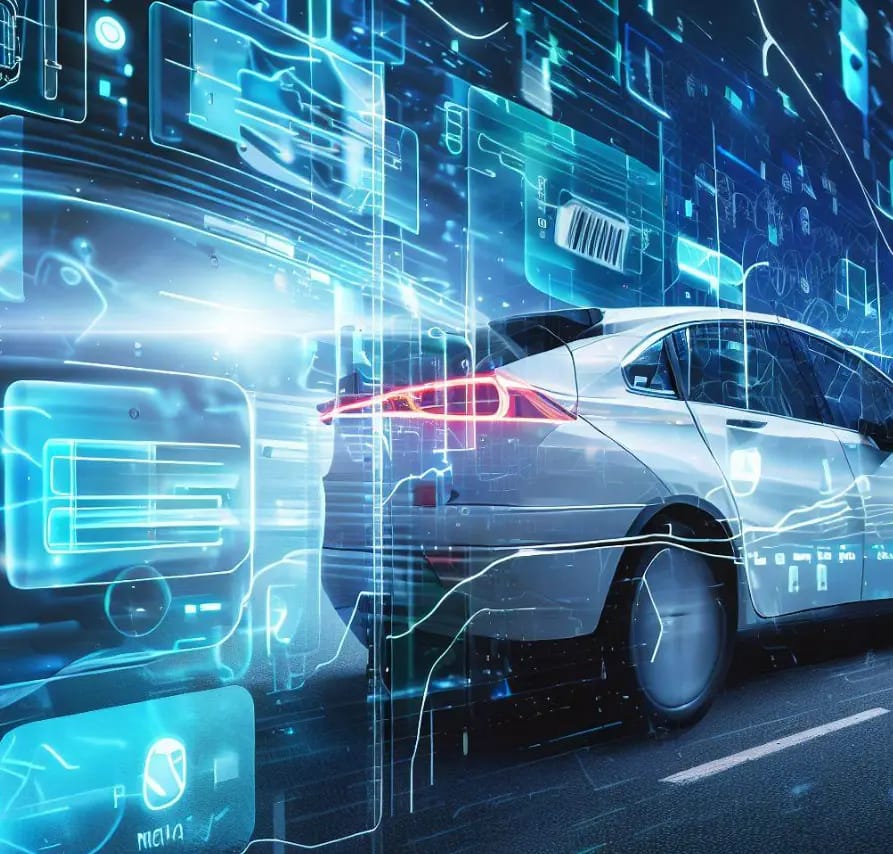The steering wheel is a critical interface between electric vehicle and driver. As automakers optimize their EV offerings, steering wheel design has seen rapid innovation and customization. Steering wheels not only enable vehicle control, but also provide information and accommodate driver needs.
This article will explore steering wheel configurations unique to electric cars. We’ll cover steering system advances, ergonomic factors, and the potential future of the EV steering wheel.
Early electric vehicles carried over traditional hydraulic power steering systems from gasoline-powered cars. Hydraulic steering uses fluid pressure and hydraulic pumps to reduce driver steering effort. However, hydraulic systems have several disadvantages:
Electric power steering (EPS) overcomes these issues by using an electric motor to provide assistive torque. EPS offers key benefits:
EPS enables automakers to optimize steering for their EV platforms. Software controls allow flexible assist programming adapted to vehicle size and use case.
An emerging innovation is steer-by-wire technology, eliminating the mechanical connection between wheel and steering wheel. Instead, steering inputs are electronically transmitted to actuators at the wheels.
Potential steer-by-wire advantages include:
This technology opens new doors for steering wheel size, shape, location, and functionality. Steer-by-wire systems have appeared on limited concept vehicles but await widespread commercial adoption.

Variable-ratio steering alters the steering gear ratio based on driving conditions. At low speeds, a low gear ratio provides greater steering for a given wheel input. At higher speeds, the ratio increases for stability.
The varying ratio improves low-speed maneuverability while maintaining easy high-speed tracking. This enhances the overall steering feel across different velocities.
Variable steering naturally complements electric power steering. The EPS computer can dynamically optimize gearing as needed, without physical gearing limitations.
Electric steering systems integrate well with advanced driver assistance tech and semi-autonomous features. For example, lane keep assist uses steering torque to prevent unintentional lane departure. EPS enables precise, subtle, and seamless intervention.
Some systems even provide haptic feedback through the wheel, such as vibrating alerts to correct driver inattention. This tactile feedback engages multiple senses for safety.
As EVs progress toward full self-driving, communication through the steering wheel will become increasingly important.
A steering wheel’s shape, size, and adjustability impact comfort and usability. Ergonomics are key for daily driven EVs.
Steering wheel diameter has shrunk dramatically in modern EVs compared to early 20th century vehicles. Without power steering, large diameters up to 20 inches provided necessary leverage.
Today, typical passenger EV wheels are 13 to 15 inches in diameter. Smaller diameters are now viable thanks to electric assist, enabling improved ergonomics. Benefits include:
Performance-focused EVs often minimize diameter even further, with some down to 12 inches for responsiveness. Larger vehicles conversely may increase diameter for torque.
EV steering wheels deviate from the typical round rim shape in some cases. Alternative shapes can improve grip zones and thumb contours.
Formula-E racing wheels use unconventional shapes optimized for visibility and grip. More radical concepts include joysticks and aircraft yoke designs. As steer-by-wire emerges, shape limitations may dissolve.
Finger notches, thumb pads, and tactile materials improve wheel traction during aggressive driving. Alcantara suede, leather, and perforated wraps create positive contact.
Tilt, telescoping, and vertical adjustments are now common in EVs. This tailors wheel position to drivers of different sizes for comfort and visibility.
Some wheels also employ “swing away” designs. The wheel can slide right on its column when entering or exiting the vehicle, then return to position. This eases ingress and egress in tight cabins.
EV steering wheels integrate various information systems and vehicle controls. Well-designed interfaces keep the driver’s eyes on the road and hands on the wheel.

Digital displays have replaced physical gauges in many EVs. Important data like speed, range, and battery level are shown on a steering wheel monitor.
Configurable displays support custom information profiles. Drivers may prioritize different data points to their preference.
Advanced displays provide animation, navigation assistance, and more. Augmented reality can even overlay graphical data on real-time vision.
Vehicles now put many secondary controls, like entertainment, voice, and cruise functions, directly on steering wheels. This avoids dangerous eyes-off-road reaching for dash controls.
Touchpads, toggles, and scroll wheels keep hands engaged with the wheel during adjustment. Voice command buttons also enable hands-free operation.
As autonomous tech improves, control functions may shift from the wheel to interfaces optimized for non-driving positions.
Haptic feedback uses subtle wheel vibrations to provide notifications and warnings to the driver. These can alert to lane drift, obstacles, speed limits, or other situations without visual or audio distraction.
More advanced haptic systems even emulate road feel and textures. This provides a new tactile connection and driving engagement without mechanical linkage.
To communicate autonomous status, an EV wheel may contain illuminated or animated displays. Lighting zones indicate when driving systems are active and when control is required from the user.
This provides clear situational understanding between human and vehicle. More research is needed on optimal handover signaling through the wheel.
Fully autonomous EVs will recast the role of steering wheels and their necessity. As artificial intelligence matures, several questions arise around steering:
If human driving is prohibited in autonomous EVs, steering wheels may be omitted entirely. However, this could complicate on-demand user intervention in an emergency.
Perhaps steering could remain purely for emergency override. This backup authority would provide peace of mind until users build complete confidence.
Eliminating the wheel completely forfeits possibilities to repurpose it for non-driving contexts. Steering wheels may still provide value for:
Wheel interfaces could dynamically switch between manual driving in select scenarios and these new roles. More research is needed around cognitive and emotional responses.
Without a steering wheel, new modes of communication between passengers and AI drivers will emerge. These may include:
These alternatives introduce new ergonomic and human-factors challenges around information bandwidth and transparency. Additional research will help refine solutions.
Steering wheel innovation has accelerated in parallel with the electric vehicle revolution. As EVs continue proliferating, steering technology and design will undergo further transformation.
The steering wheel itself may remain, transformed into more of an omnipurpose control interface. Or it may phase out entirely, replaced by novel interaction methods. Certain use cases may preserve traditional designs and manual control for purists.
Regardless, steering will provide a critical link between electric vehicles and their operators. Both driving dynamics and digital experiences will continue advancing through thoughtful user-centric design.
The steering wheel’s long history has bent with each era’s tehnological shifts. The journey ahead promises to completely reinvent this iconic automotive component once again.